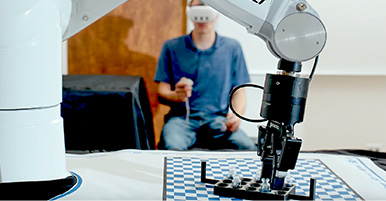Citation
Gervasio, Melinda & Murdock, Janet. (2009). What were you thinking?: filling in missing dataflow through inference in learning from demonstration. 157-166. 10.1145/1502650.1502675.
Abstract
Recent years have seen a resurgence of interest in programming by demonstration. As end users have become increasingly sophisticated, computer and artificial intelligence technology has also matured, making it feasible for end users to teach long, complex procedures. This paper addresses the problem of learning from demonstrations involving unobservable (e.g., mental) actions. We explore the use of knowledge base inference to complete missing dataflow and investigate the approach in the context of the CALO cognitive personal desktop assistant. We experiment with the Pathfinder utility, which efficiently finds all the relationships between any two objects in the CALO knowledge base. Pathfinder often returns too many paths to present to the user and its default shortest path heuristic sometimes fails to identify the correct path. We develop a set of filtering techniques for narrowing down the results returned by Pathfinder and present experimental results showing that these techniques effectively reduce the alternative paths to a small, meaningful set suitable for presentation to a user.


